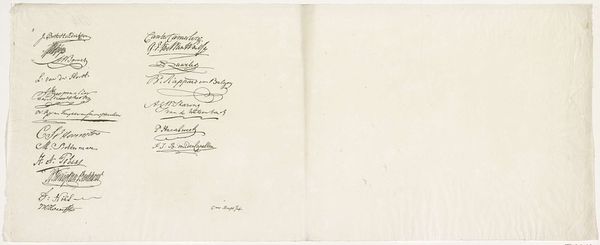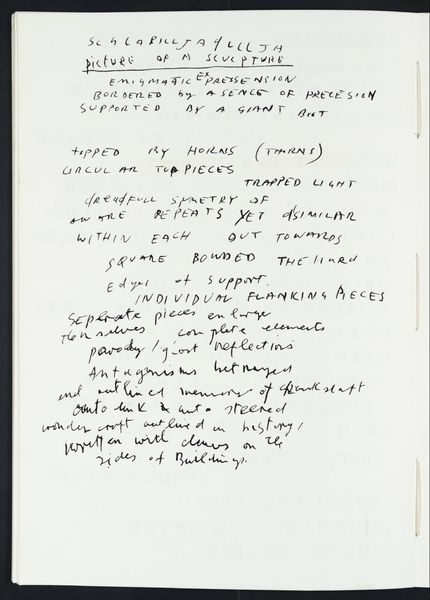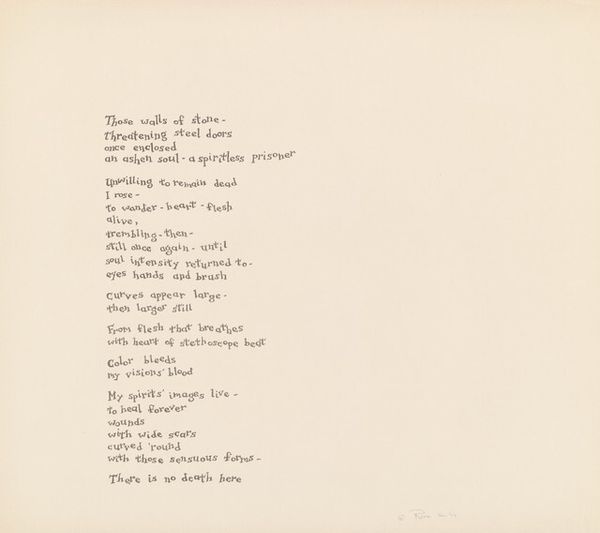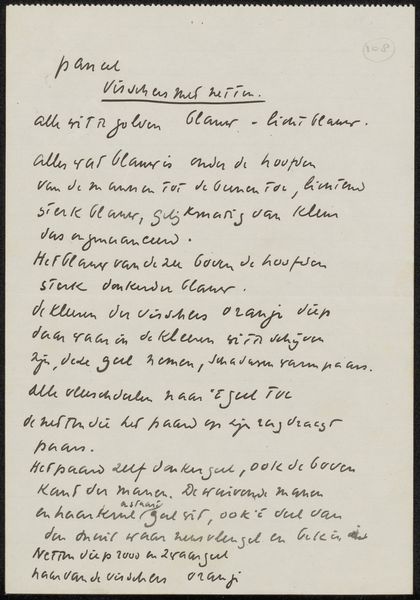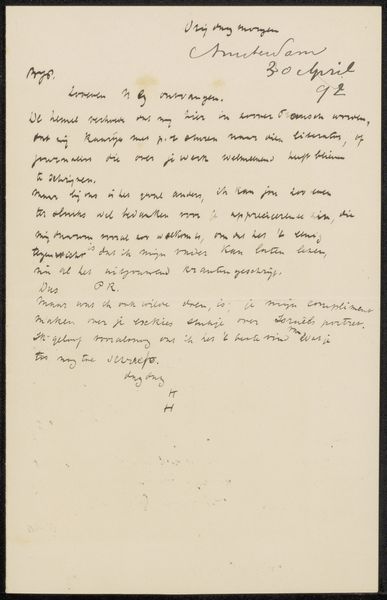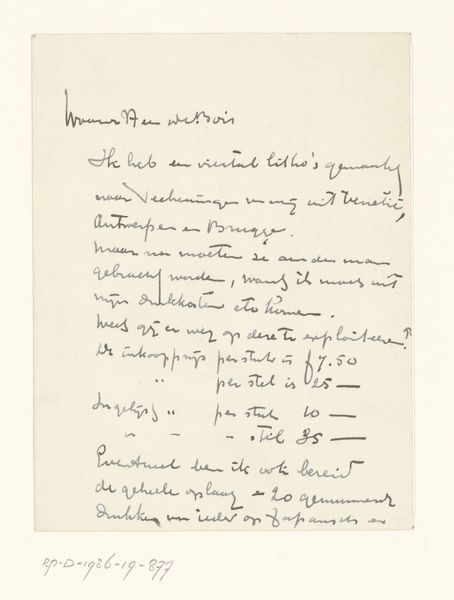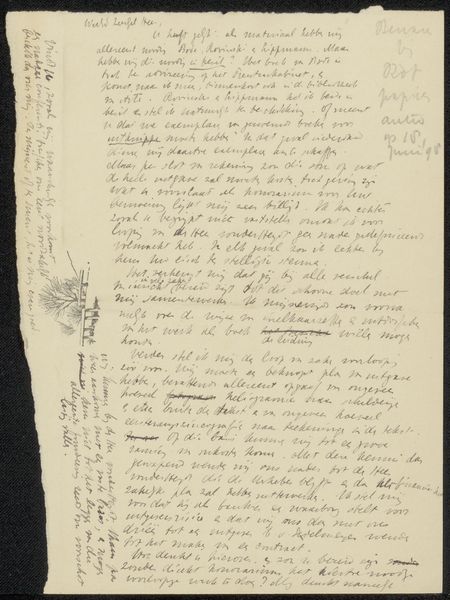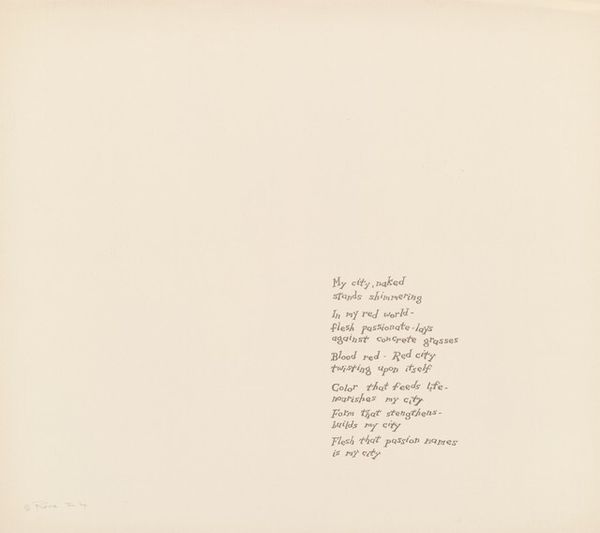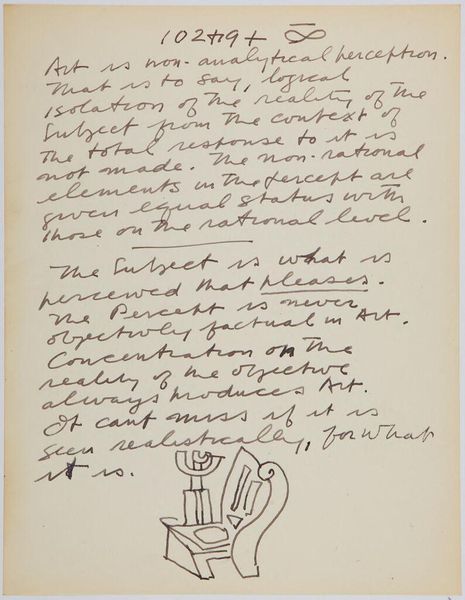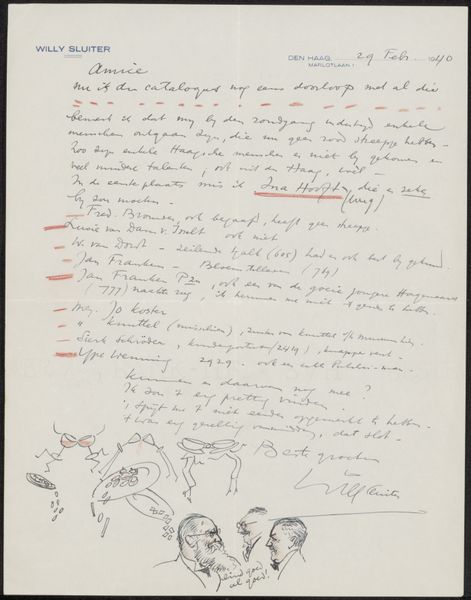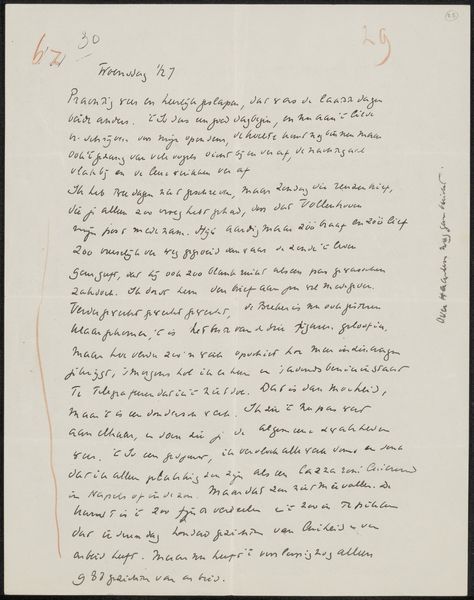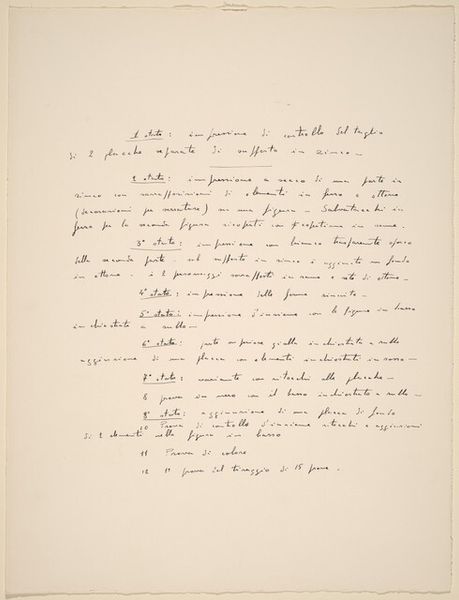
Het stokske van Johan van Oldenbarnevelt met het gedicht van Vondel op het stokske, 1619 19th century
0:00
0:00
drawing, textile, paper, ink, pencil
#
portrait
#
drawing
#
aged paper
#
dutch-golden-age
#
textile
#
paper
#
ink
#
fading type
#
pencil
#
ink colored
#
abstraction
#
line
#
pencil work
#
northern-renaissance
#
calligraphy
Dimensions: height 331 mm, width 224 mm
Copyright: Rijks Museum: Open Domain
Curator: Well, this piece, located in the Rijksmuseum, is titled "Het stokske van Johan van Oldenbarnevelt met het gedicht van Vondel op het stokske, 1619." It's attributed to an anonymous artist and thought to originate from the 19th century. Editor: My initial reaction is that of looking at a handwritten artifact of personal, maybe even melancholic significance. The drawing seems fragile, emphasized by the aged paper and fading ink. Curator: Indeed, it’s rendered with ink and pencil on paper, giving it a delicate texture. The dominant element, aside from the handwritten script, is the drawing of a stick on the left-hand side. Considering that this portrait style emerged during the Dutch Golden Age, the line work appears meticulous despite its imperfections. Editor: For me, the inclusion of textile qualities with the "aged paper," introduces complex signifiers. I notice a clear, intentional "abstraction" as listed among the artwork's themes, and wonder about its link with Renaissance portraiture. Can you help me unpack this link, with its apparent tension between realism and symbol? Curator: Let's look at the interplay between the object and the inscription, "Het Stokske." Considering that the artwork displays poetry by Vondel, and referencing Van Oldenbarnevelt, its significance resides beyond its visual characteristics, engaging deeply with themes of loss and remembrance embedded in 17th-century Dutch history. Editor: This sheds a totally new perspective. I think the context of Northern Renaissance also helps. Suddenly, it's not just an image but a curated memorial, speaking volumes about how political figures were publicly grieved and memorialized in that period. It reminds me about our responsibility of documenting and preserving cultural heritage through our institutions, such as museums. Curator: Precisely. It transforms a simple drawing into a powerful cultural object. I'm now thinking about the way the linear abstraction functions within its own aesthetic system of expression. It suggests how artistic styles are adapted to social and emotional contexts. Editor: I see it as how art serves commemorative purposes while subtly navigating sensitive social terrain through material form. Curator: An incredibly thought-provoking piece!
Comments
No comments
Be the first to comment and join the conversation on the ultimate creative platform.

